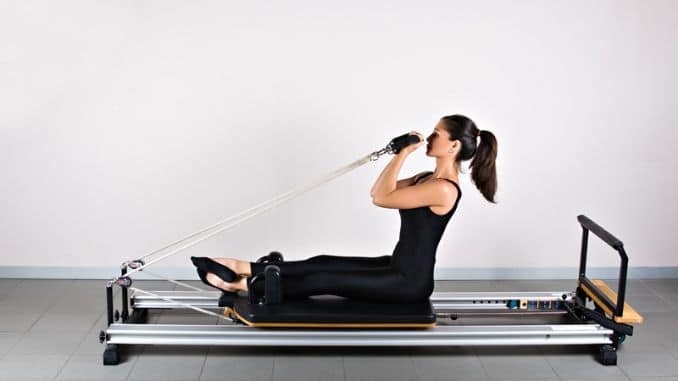
The question is how bodyweight sequencing can help improve your workout result.
Today, I have another interview with Tyler Bramlett.
I have interviewed Tyler before, but this time he will talk about his different approach to bodyweight training.
Tyler Bramblett runs a website called garage Wacom which they are dedicated to helping people look, feel, and perform their best using functional movement progressions.
Check out the video below for the interview.
Enjoy!
Rick Kaselj, MS
CLICK HERE to watch the YouTube video.
Body weight sequencing is a great way for anyone who works out at home to create varied, challenging, and effective workouts. By arranging your exercises in a way that alternates the body parts worked, you can get better results from each exercise.
Sequencing your bodyweight exercises correctly can help you achieve more in less time. Bodyweight sequencing refers to the order in which an exercise is performed.
Each exercise’s ideal body weight sequencing differs and will change depending on your goals.
So why does it matter? Why should you care about bodyweight sequencing? It’s because it can help you have better workouts.
In the above interview, you will discover:
- Tyler’s Bodyweight Training methods
- How do patterns and sequences in bodyweight exercises work?
- Benefits of bodyweight training sequencing
- What is Dynamic Flexibility?
- An effective way to improve flexibility
- What is Intramuscular Coordination?
- Benefits of using Intramuscular Coordination
Tyler’s Bodyweight Training methods
The component of bodyweight training is movement complexity. You can sophisticate and make the movements more complex than just regular repetitive exercises by stringing them together to increase their difficulty. You’re strengthening not only your muscles but also your bones, tendons, and ligaments. It’s good for both inside the gym as well as outside it!
I always urge people to forget about doing super high repetitions with bodyweight workouts because if they want mental toughness, then go ahead-I’m all for that. But my approach tends to be more “what can I do without making these exercises insanely difficult?” For example, someone might stand on a Swiss ball while performing squats with one arm overhead; However, this would certainly pose some challenge (and would work quite well); other ways could provide an equally challenging experience without being ridiculous, like squatting against gravity or using resistance bands during handstand push-ups which also help build muscle endurance in addition to strength.
How Do Patterns And Sequences In Bodyweight Exercises Work?
Let me give you an example of the benefits of single-leg work. So I had a woman training with me for a long time- at first, she did not have any balance or coordination skills! Her body would topple over immediately when she saw anything related to balancing on one foot.
We cannot do squats or kneeling push-ups even if they are exercises that will benefit her in some way because she needs more than just being able to squat and push up from her knees. This woman also needed coordination, so we started working on a single leg position, simply standing up straight using only one foot while holding the other out behind us without leaning our hips forward or backward.
So what you are doing is training, not just your muscles. By doing so, you are getting better at using the body in the manner it should be used, and this allows for more muscle firing, which increases the number of calories burned during workouts.
And everything becomes much safer simultaneously because there’s less chance of injury due to poor technique or equipment malfunctions. This number one reason people get hurt when working out is garbage tech-it happens all too often!
Benefits Of Bodyweight Training Sequencing
The benefit of bodyweight sequencing is how it ends up improving flexibility. The benefit of using bodyweight sequencing for flexibility is that it improves many joints in the body. We started with a client with tight shoulders who couldn’t do push-ups, where his scapula would rotate inward. He also had terrible squat form and his knees knocking together. I tried to improve flexibility, but nothing seemed to work. We started implementing frequent sequences because they were more effective than general stretching at getting clients more flexible so they could move through a full range of motion as their ideal ranges require.
What Is Dynamic Flexibility?
Dynamic mobility is the ability to move in any direction- not just passively, which can be done with gravity. When you stretch your legs into a split, it’s passive flexibility because all the work is being done by gravity pulling on your muscles. But when you actively pull yourself up into a squat and rotate side to part way through them as well – that’s dynamic stretching! You want both strength and coordination simultaneously – if someone has one without another, they are missing out on their potential abilities! For example, professional athletes like fighters or Brazilian jiu-jitsu world champions have insane amounts of dynamic flexibility due to training techniques.
An Effective Way To Improve Flexibility
Something interesting was discovered when the coach began giving this client light resistance to help him stretch. As time passed, he became more flexible and could squat down easily. If someone can only squat halfway down due to restricted muscle function, they will not get the same results as someone who can squat through a full range of motion. So let’s say person A has terrible form and can go halfway down at most, whereas person B squats completely without any problem. Person A will still grow less over time despite doing ten reps per set for each exercise, while neither ever miss a rep or stops because both do ten sets for one specific exercise.
What Is Intramuscular Coordination?
The second thing we need to focus on is intramuscular coordination. And so a simple way to think about intramuscular coordination is how you coordinate the use of your biceps, chest, lats, and abs. Right. You have to learn how to use all those muscles simultaneously, believe it or not. That means hard I can fire my bicep with my brain. Right. And what’s interesting is when you look into the recent studies, most people can only use 10% of their total muscle fibers in this lifetime. Remember: your muscles have the potential power of up to 30%. Athletes, for example, access as much as 50% – which explains why these athletes will be much stronger than you because they’ve got 20 pounds more muscle but are still five times stronger! The reason is that it’s about increasing their ability to contract muscularity when in a position where contraction can happen at its fullest extent for a brief period of benefits Of Using Intramuscular Coordination.
To improve your intra and inter-muscular coordination, you must train by going from position to mindfulness. For example, squatting then extending your hips or doing push-ups before rolling into a back bridge or tabletop position. Doing this will help increase flexibility as well as the contraction of muscles. It also helps with coordination skills since these movements can be done quickly in under two minutes during our rest periods.
I hope you enjoyed the interview.
If you would like more information on Tyler Bramlett, you can visit him at GarageWarrior.com.
Take care, and have a great day.
Rick Kaselj, MS
Check out the Bodyweight Blender program here for your equipment-free workout to lose weight and tone your body!


